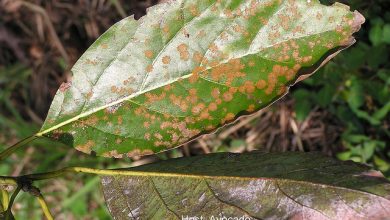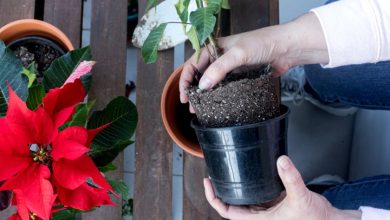Fruit fly: how to eliminate with ecological remedies
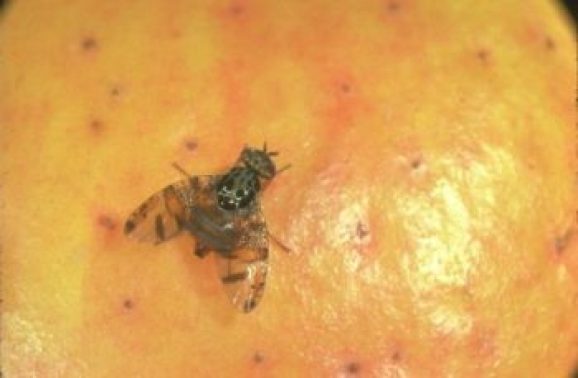
Hello to all gardeners! The objective of today’s article is to learn to recognize if we have the fruit fly present in our orchards and what are the different methods to control it.

Who is the fruit fly?
Surely you have already heard about the fruit fly because it is one of the most common pests within the order of Diptera . Diptera comprise all the flies and mosquitoes that we know of.
I am going to tell you a secret about this group of insects: they only have one pair of wings because the second pair, over the years of evolution, gradually disappeared until they became 2 small appendages known as rockers (which they use to rotate). In addition, they say that they are one of the insects that have the best flight thanks to these characteristics.
The fact of having only two wings will allow us to differentiate them from the order of Hymenoptera where bees, wasps, etc. are found. The next day you see a fly, take a look!
However, we must not go wrong with this very general term. Who exactly is the fruit fly?
There are two species of flies that are called this way:
- Drosophila melanogaster also known as «vinegar fly» . This species of fly usually feeds mainly on fruits in the fermentation process such as grapes, apples, etc. In addition, it is a species widely used in the scientific world to do experiments with it.
- Ceratitis capitata known as the «Mediterranean fruit fly» , is the fly that I am going to talk about today.
Life cycle of the fruit fly: Ceratitis capitata
This fly comes from Africa and is currently present throughout the Mediterranean area , where it causes significant damage to many fruits.
- The adults , as you can see in the photo, have bright colors. They are a little smaller than the house flies that we always see in our homes. Its eyes are large, its abdomen is striped yellow and gray, and its wings are spotted with various colors.
- The eggs are white, elongated and with a smooth surface.
- The larvae (the one that damages the fruits) are small white worms without legs .
- The pupa is the stage between larvae and adults that lasts approximately 1 to 2 weeks.
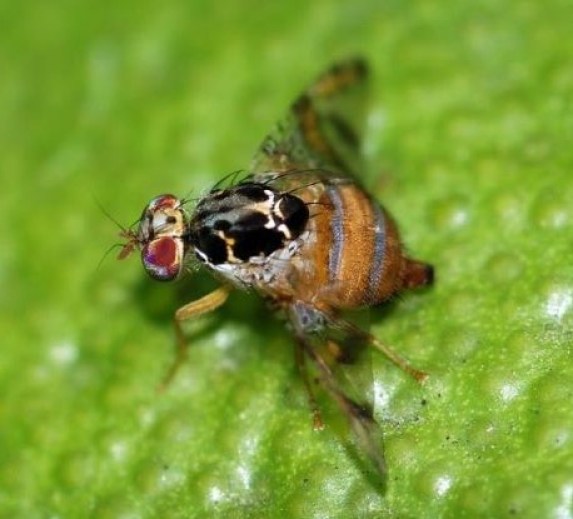
Fruit fly damage
Adult flies lay eggs (between 5 to 10 eggs) under the epidermis of the fruits . Once the fruits are infected, the larvae develop inside . The infected fruit falls prematurely and the fruit that is picked from the tree immediately rots. The larvae pupate and pass the puparium stage in the soil . Once the pupa is transformed into an adult, they fly off to re-infect new fruits.
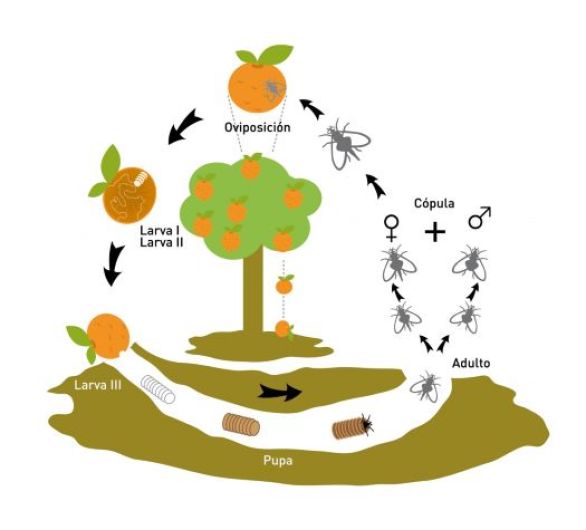
Plants affected by fruit flies
They prefer fleshy fruits with sweet pulp and damage is usually more important in late varieties. His favorite colors are orange and yellow. In winter they attack oranges and mandarins. In spring to apricots. In early summer to peaches. In August and September to the rest.
But in general, the main fruits attacked are: peach, apricot, orange, mandarin, figs, grapes, pomegranates, medlars, plums, pears, custard apples, papayas, mangoes , etc.
The presence of bites or simply the laying of the eggs inside causes rejection by the market.
Control methods: how to eliminate the fruit fly
Currently, there are various methods of control of the fruit fly , among them the following stand out:
- Cultural methods: eliminate the affected fruits to avoid subsequent generations.
- Also avoid having food scraps (in bins) near the trees as it will attract these mosquitoes.
- Biological control : there are several natural enemies that can help us keep flies away . Among them, some predators (for example spiders) and parasitoids ( Diachasmimorpha tryoni, Diachasmimorpha longicaudata, Fopius arisanus, Pachycrepoideus vindemmiae or Spalangia cameroni ) stand out.
- Mix vinegar and soap in a jar, cover with a plastic wrap and make holes. The flies will be attracted to the vinegar and then they will not be able to get out.
- There is also some chemical treatment to eliminate them but it is not recommended since there may be remains in the fruits that we eat.
On the contrary, if your fruits are damaged but you do not know what might be due, here is a link to an article on « fruit damage «.

![Photo of Plant Gardenias: [Care, Planting, Irrigation, Substrate]](https://www.complete-gardening.com/wp-content/uploads/2022/08/plant-gardenias-care-planting-irrigation-substrate-390x220.jpg)
![Photo of Plant a Cherry Tree: The Guide to Do It [Images + Step by step]](https://www.complete-gardening.com/wp-content/uploads/2022/08/plant-a-cherry-tree-the-guide-to-do-it-images-step-by-step-390x220.jpg)
